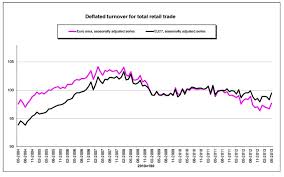 Indicators of volume in the forex market showing interest traders or investors against a given currency pair. The volume of the forex market is not measured in the number of contracts traded or magnitude of the contract because forex trading is not centralized as well as stock trading. In this case the volume measured by tick, and in the event of changes in the bid (and ask) on the display trading platform, then the volume will increase. Indicators of volume in the forex market showing interest traders or investors against a given currency pair. The volume of the forex market is not measured in the number of contracts traded or magnitude of the contract because forex trading is not centralized as well as stock trading. In this case the volume measured by tick, and in the event of changes in the bid (and ask) on the display trading platform, then the volume will increase.
High volume is due to frequent price changes and otherwise low volume shows the rarity of price changes that occur. When a holiday in major world markets such as the current Christmas and New Year holidays, the volume tends to be low even very low. Added large volume at price levels that are important hinted the possibility of forwarding direction of the trend (trend continuation) or reversal of a trend (trend reversal). Dwindling volume shows uncertainty or lack of interest market traders in a currency pair.
The following display volume indicator. The green color indicates the increase in volume and red colors indicate reduced volume. In the Metatrader platform volume indicators can be obtained by going to the Insert-Indicator-Volumes.
The use of volume indicator methods:
- Volume up (green) forwarding signaled the beginning of a trend or trend reversal.
- Volume down (red) would imply consolidation aatau market awaits the beginning of a change or a continuation of the trend when volume then rose.
- Large volume changes suddenly typically indicate an impending change in the direction of the trend, as well as if the volume is changed gradually (can go up or down).
In addition to the volume indicator, the indicator is made based on changes in volume and commonly used is the On Balance Volume (OBV)
The basic concept is the OBV indicator indicates the magnitude of the volume of price changes.
Calculation OBV:
If the closing price is greater than yesterday's close, the OBV (i) = OBV (i-1) + Volume (i)
If the closing price is less than yesterday's close, the OBV (i) = OBV (i-1) - Volume (i)
If the closing price is equal to yesterday's close, the OBV (i) = OBV (i-1)
Where:
OBV (i) - OBV value at the current time bar period
OBV (i-1) - the value of OBV one bar before a period of time now
Volume (i) - the magnitude of the volume at the current time bar period
OBV trend rise or fall in accordance with the direction of the trend of price movements. Because the price movement precedes OBV is considered so if the OBV trend break in the upward direction is a signal to buy, while if the break downwardly is a signal to sell.
|